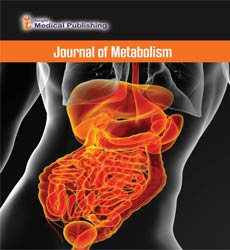Can the Reduction of Renalase - The New Member of Catecholamine Family - in the Brain be the Actual Cause of Major Depression?
Department of Medical Biochemistry (Firat Hormones Research Group), Faculty of Medicine, Firat University, Elazig, 23119, Turkey
- Corresponding Author:
- Prof. Dr. Suleyman Aydin
Firat University, School of Medicine
Department of Medical Biochemistry (Firat Hormones Research Group)
23119-Elazig, Turkey
Tel: 90 5334934643
E-mail: saydin1@hotmail.com
Received Date: November 24, 2017; Accepted Date: November 27, 2017; Published Date: November 29, 2017
Citation: Aydin S (2017) Can the Reduction of Renalase - The New Member of Catecholamine Family - in the Brain be the Actual Cause of Major Depression? J Metab. Vol. 1 No.1: 4.
Copyright: © 2017 Suleyman Aydin. This is an open-access article distributed under the terms of the Creative Commons Attribution License, which permits unrestricted use, distribution, and reproduction in any medium, provided the original author and source are credited.
Abstract
Editorial
Almost everybody can experience major depression (clinical depression) once in their lives. It is approximately two folds among women than in men due to the hormonal changes during menstrual periods, pregnancy, missed abortions or menopause [1]. In case the symptoms such as lost sense of taste, fatigue, feeling of uncontrolled life, lack of concentration, sleeping and appetite disorders, delusions, hallucinations, upset and desperate feeling takes more than 2 weeks, major depression is considered [1,2]. The biochemical and physiological mechanisms underlying major depression are not clearly understood yet. However, one of the most frequently investigated biochemical parameters up to today is the imbalance between the production and catabolism of dopamine [3]. The enzyme responsible for the metabolization of dopamine and other catecholamines [epinephrine (adrenaline), and norepinephrine (noradrenaline)] renalase. It has been reported that, options of renalase for catabolization of catecholamines are dopamine, epinephrine and norepinephrine, respectively [4].
This editorial paper hypotheses that there might be a relation between the amount of renalase enzyme and major depression. Because dopamine levels were observed to be high among patients with major depression [5]. The enzyme renalase was first described in the kidneys, which are defined to be the major organ of renalase synthesis currently [6]. It is additionally synthesized in many biological organ and tissues including the brain. Blood serum and urine have renalase as well. Physiological concentrations in serum and urine are 3-5 microgram/mL [7,8]. In case of excessive or insufficient synthesis or release of the enzyme, a pathological situation may be observed. As an example, a failure would be observed in catabolization of dopamine [catabolization of Homo Valinic Asit (HVA)] related to the reduced amount of renalase in the brain in major depression, and that would lead to a dopamine accumulation in the brain [9]. This accumulation would result in the symptoms of major depression mentioned above. It has been here suggested that peripheral renalase could not contribute to dopamine catabolization in the brain since its large molecular structure disabled the passage through blood-brain barrier (BBB) [8]. Prior to the description of renalase, the activity of dopamine-beta hydroxylase, which is an enzyme that plays role in the turnover between dopamine and epinephrine, was reported to be low in the sera of patients with depression [10]. Low dopamine-beta hydroxylase activity in circulation would lead to a block in dopamine and epinephrine or norepinephrine turnover, and a subsequent dopamine accumulation. Although this finding demonstrates that peripheral renalase enzyme may not be related to dopamine accumulation in the brain, because no sufficient evidence has been reported so far.
In conclusion, if it has been tested a possible role of renalase in major depression via both animal-based (such as Porsolt testthe depression formed on mice by placing into a swimming tank with no possibility to escape) and clinical studies. After testing those results might help to provide a better life of these patients and if fatigue would be eliminated and the quality of lives of these patients would also be improved.
References
- Hoertel N, Blanco C, Oquendo MA, Wall MM, Olfson M, et al. (2017) A comprehensive model of predictors of persistence and recurrence in adults with major depression: Results from a national 3-year prospective study. J Psychiatr Res 95: 19-27.
- Simons P, Cosgrove L, Shaughnessy AF, Bursztajn H (2017) Antipsychotic augmentation for major depressive disorder: A review of clinical practice guidelines. Int J Law Psychiatry 55: 64-67.
- Belujon P, Grace AA (2017) Dopamine System Dysregulation in Major Depressive Disorders. Int J Neuropsychopharmacol.
- Maciorkowska D, Zbroch E, Malyszko J (2015) Circulating renalase, catecholamines, and vascular adhesion protein 1 in hypertensive patients. J Am Soc Hypertens 11: 855-864.
- Pizzagalli DA (2014) Depression, stress, and anhedonia: toward a synthesis and integrated model. Annu Rev Clin Psychol 10: 393-423.
- Xu J, Li G, Wang P, Velazquez H, Yao X, et al. (2005) Renalase is a novel, soluble monoamine oxidase that regulates cardiac function and blood pressure. J Clin Invest 115(5): 1275-1280.
- Wang Y, Safirstein R, Velazquez H, Guo XJ, Hollander L, et al. (2017) Extracellular renalase protects cells and organs by outside-in signalling. J Cell Mol Med 21(7): 1260-1265.
- Aydin S, Ugur K, Aydin S (2017) Could Pulmonary Hypertension Be the Cause of Renalase Insufficiency? J Metab 1: 1.
- Mazure CM, Bowers MB Jr, Hoffman F Jr, Miller KB, Nelson JC (1987) Plasma catecholamine metabolites in subtypes of major depression. Biol Psychiatry 22(12): 1469-1472.
- Meyers BS, Alexopoulos GS, Kakuma T, Tirumalasetti F, Gabriele M, et al. (1999) Decreased dopamine beta-hydroxylase activity in unipolar geriatric delusional depression. Biol Psychiatry 45(4): 448-452.
Open Access Journals
- Aquaculture & Veterinary Science
- Chemistry & Chemical Sciences
- Clinical Sciences
- Engineering
- General Science
- Genetics & Molecular Biology
- Health Care & Nursing
- Immunology & Microbiology
- Materials Science
- Mathematics & Physics
- Medical Sciences
- Neurology & Psychiatry
- Oncology & Cancer Science
- Pharmaceutical Sciences
